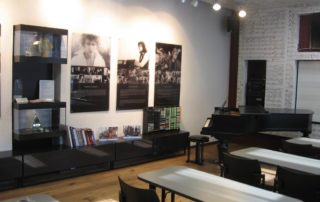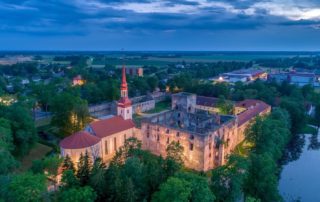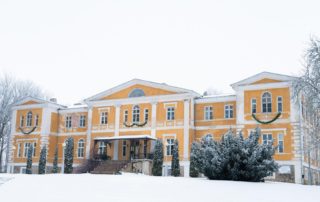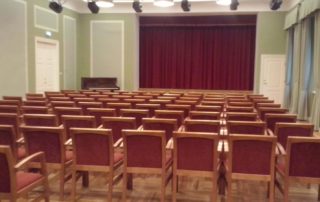Alo Mattiisen’s piano classroom
In the centre of the town, at Jõgeva Music School, where Alo Mattiisen studied, a memorial was unveiled to mark his 45th birthday. Five years later, in 2011, his piano classroom was also completed to celebrate his 50th birthday. It features his fully restored piano and a display of the composer's personal items. The classroom can be used to host small concerts, training sessions, conferences and music lessons.
Põltsamaa Castle
The stone fortress was constructed on the banks of the Põltsamaa River already in 1272. Later on (1570–1578) the fortress was the residence of Livonia's King Magnus. Repeatedly pillaged, the castle was rebuilt by Woldemar Johann von Lauw. In the 18th century the fortress became a grand rococo-style palace. The castle and the church burnt down in 1941. Only the church was restored in 1952. The castle remained in ruins, waiting for its time. The complex is open again from the summer of 2023. The castle tower, convent building, and gate building are open to visitors, where you can find [...]
Kuremaa Castle and Park
Kuremaa Classicist manor house was built in 1837-1843 by the von Oettingen family. The manor house was designed by the architect E. J. T. Strauss from Tartu. There is also a room for a museum in the castle which gives an overview of the region and of the history of Kuremaa Agricultural School. At present the rooms of the castle are used for organising conferences. The park rich in species descends towards lake Kuremaa which attracts visitors with its well-kept beach and possibilities for taking a rest.
Pajusi manor
Pajusi manor was constructed in the 17th century. Its long, stone main building in Classicist style is thought to have been erected in the early 19th century. It was one-storey; only the central section was adorned with a small upper floor, which bears a distinct decorative window. In addition to the main building, the manor as a whole includes a number of other buildings and a large park. Did you know...? *Remaining of the main building of the manor are its central part and right-hand wing, which is home to Pajusi Community Centre










